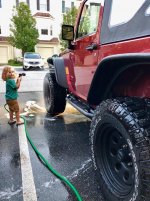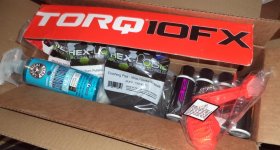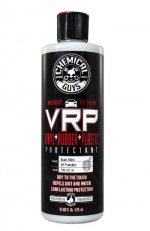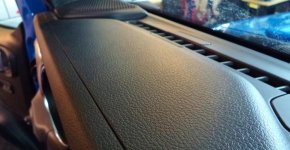jesse3638
Hooked
The torque 10fx is the same machine I have and it works really well. I think it's too slow, not powerful enough, and has a short throw for professionals as time is money.
I've never used a cleaning brush. I just rinse them out with water then put a dot of soap on it and rinse it put thoroughly like you would a sponge. I'll then put it back on the machine to spin out the excess water. Then I'll set it in the sun to dry. The concern I have with using it before its dry is that it will fling water and polish all over. It may dilute the polish and change its effectiveness also.
With regards to the pin stripes I'd start with the lightest polish that works. Think of polish as sand paper. The higher the number the finer the grit. Say if 220 works for your woodworking project you're not going go want to use 60 as you'll have to work your way back to 220 and create more work for yourself. Also when you polish your actually removing micro layers of clear coat or paint. The more aggressive the polish the more it'll remove.
Holograms look like spiralling 3D swirls on the paint. They are more noticable in dark paints. They are usually caused by a rotary polisher with heavier polish. You have to take finer and finer polish to remove them. Typically a dual action polisher like the 10fx won't create holograms, but I'd still be careful. If you google it you can probably find a good example. I think The Chemical Guys have a video on how to remove them.
I'm far from a pro, but these are some of the things I've learned through experience. The key is patience. Set aside several hours for a full paint correction. When I've done it it's usually about 5 to 6 steps but so worth it. I've listed them below.
1. Thoroughly wash and dry.
*If its been recently waxed you'll need go use a wax remover before proceeding*
2. Clay the entire vehicle. Base your clay selection on the severity of contamination. Heavy clays will remove heavy contaminants much faster but will mar the paint and require polishing after.
3. Select polish based on severity of paint correction required. Use only as aggressive polish needed to remove swirls and pin stripes. Severe paint correction may require 2 to 3 polishing steps.
4. Seal the paint with a product like Jet Seal.
5. Wax the vehicle with the wax of choice.
This is why good mobile detailers charge $300+ for a full paint correction. It can take 4-6 hours to do an average sedan.
Sent from my SM-G973U using WAYALIFE mobile app
I've never used a cleaning brush. I just rinse them out with water then put a dot of soap on it and rinse it put thoroughly like you would a sponge. I'll then put it back on the machine to spin out the excess water. Then I'll set it in the sun to dry. The concern I have with using it before its dry is that it will fling water and polish all over. It may dilute the polish and change its effectiveness also.
With regards to the pin stripes I'd start with the lightest polish that works. Think of polish as sand paper. The higher the number the finer the grit. Say if 220 works for your woodworking project you're not going go want to use 60 as you'll have to work your way back to 220 and create more work for yourself. Also when you polish your actually removing micro layers of clear coat or paint. The more aggressive the polish the more it'll remove.
Holograms look like spiralling 3D swirls on the paint. They are more noticable in dark paints. They are usually caused by a rotary polisher with heavier polish. You have to take finer and finer polish to remove them. Typically a dual action polisher like the 10fx won't create holograms, but I'd still be careful. If you google it you can probably find a good example. I think The Chemical Guys have a video on how to remove them.
I'm far from a pro, but these are some of the things I've learned through experience. The key is patience. Set aside several hours for a full paint correction. When I've done it it's usually about 5 to 6 steps but so worth it. I've listed them below.
1. Thoroughly wash and dry.
*If its been recently waxed you'll need go use a wax remover before proceeding*
2. Clay the entire vehicle. Base your clay selection on the severity of contamination. Heavy clays will remove heavy contaminants much faster but will mar the paint and require polishing after.
3. Select polish based on severity of paint correction required. Use only as aggressive polish needed to remove swirls and pin stripes. Severe paint correction may require 2 to 3 polishing steps.
4. Seal the paint with a product like Jet Seal.
5. Wax the vehicle with the wax of choice.
This is why good mobile detailers charge $300+ for a full paint correction. It can take 4-6 hours to do an average sedan.
Sent from my SM-G973U using WAYALIFE mobile app





